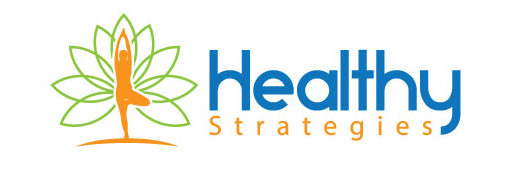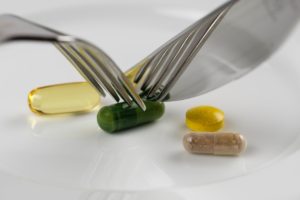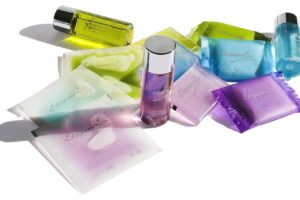Antioxidants in Human Health and Diseases
There is a lot of hype about antioxidants for health-conscious people. Since I’m trying to find some new ways to succeed in the battle with my autoimmune condition and other health issues, I wanted to learn more in-depth details about them. As it turned out, this field is far more complex than I anticipated. The other thing I learned is that antioxidants are not at all harmless, and the idea to use them in high doses or for a long duration, may turn them from health-protectors into disease-inducers.
Before I talk about antioxidants, it’s meaningful to first define the terms free radicals and pro-oxidants, which are molecules normally formed during our metabolism. Free radicals are unstable molecules that can react by “stealing” hydrogen atoms from other various organic molecules, such as proteins or lipids (fats). A few examples of these “offenders” include peroxides, superoxide, hydroxyl radical, and singlet oxygen. Non-radical pro-oxidants are substances called “reactive oxygen species” or “reactive nitrogen species;” these too, can generate free radicals.
The pro-oxidants are not all evil, and at low doses they contribute to important signaling inside the cells and in-between them. They also perform vital activities against microbes, somewhat in a similar way as cleaning wounds with peroxide prevents most of them from getting infected. Moreover, after their work is done, our body has the capacity to neutralize them using certain enzymes, some other protective substances generated during metabolism (glutathione, coenzyme Q10, L-arginine, melatonin), and some nutrients that have to be provided from diet.
These are vitamins E and C, beta-carotene, lycopene, omega-3 and omega-6 fatty acids, selenium, zinc, and the polyphenols antioxidants—from fruits and vegetables. All of them are found in foods and a balanced diet should provide enough amounts. Two other antioxidants, lutein and zeaxanthin—abundant in leafy greens—accumulate in the central retina, and may help in preventing macular degeneration. Their additional blue light filtration capacity can provide extra benefits in this technology-laden era, when almost everybody, for hours each day, uses smartphones, tablets, and computers of all kinds.
The problems occur when there are imbalances in between the free radical production and their disposal being overwhelmed. Why can this happen? Some reasons are inflammation, infections, stress, excessive exercise, but also environmental factors. Water and air pollution, cigarette smoke, ultraviolet (UV) light, medications, metals (aluminum, cadmium, mercury, arsenic), cooking (smoked meat, used oil), radiation, and the numerous chemicals we are exposed to day-in and day-out, they all come into play.
Subsequent to all these, the free radicals that form can trigger cell damage by affecting proteins, lipids and nucleic acids—process generally referred to as oxidative stress. This has been linked with numerous conditions, such as cancers, cardiovascular disease (heart attacks and strokes), neurodegenerative conditions (such as Parkinson disease and Alzheimer dementia), autoimmune diseases, as well as kidney and eye disorders.
How exactly our body’s mechanisms work against this oxidative stress? Certain enzymes reduce free radicals formation. Metabolic antioxidants on the other hand, can neutralize the free radicals and the other oxidant molecules and counteract their effects. But, by providing a hydrogen to stabilize one free radical molecule, the antioxidant itself becomes a free radical that “steals” hydrogen from other molecules, and needs subsequent chain-reactions to stabilize itself. The chain breaking can be done by nutrients antioxidants like vitamins E, C, or beta-carotene.
So, if they have health benefits, why don’t binge on these vitamins? Because supplements containing high doses and/or taken over a long period of time, can turn from antioxidants into pro-oxidants. High doses of Vitamin E can increase the risk of prostate cancer and hemorrhagic (bleeding) stroke; it also increases the risk of bleeding when using blood thinners or during surgical procedures. Beta-carotene supplements in high doses increased lung cancer in smokers, but this wasn’t noted in smokers eating abundant amounts of beta-carotene rich foods. Other studies in women taking vitamin E, C, or beta-carotene supplements, didn’t reveal benefits in preventing heart attacks or strokes. It appears that it’s much better to avoid oxidants, such as cigarettes, chemicals, and bad foods, instead of trying to counteract their effects with megadoses of antioxidants supplements.
Polyphenols antioxidants are mostly derived from fruits, tea, red wine, and coffee, but vegetables, legumes, and cereals are also good sources, as are cocoa and dark chocolate. Storage and cooking decreases some of the content, which is also influenced by the environmental conditions (hot weather, rain), in which the plants grow; organically grown plants are richer in these micronutrients. I think a balanced diet provides enough of them and we all know since childhood that eating fresh fruits and vegetables it’s very healthy. Should we use polyphenols-containing antioxidant supplements, just in case? That would be an easy fix, but unfortunately, it doesn’t quite add up to the expected benefits.
Antioxidant supplements are obtained by extraction from foods or by chemical synthesis, but often they don’t have the exact same structure and composition as when we eat the foods containing them. To me, the concept that we take “natural supplements” doesn’t seem accurate, as many times we don’t know the source or how much are we exactly taking. There are no regulations in the supplements’ industry, not to add that they don’t come cheap, or if really cheap, the quality may be very poor.
I have a lot of complaints about the inactive ingredients from the prescription and over-the-counter medications I looked at. Numerous chemicals are incorrporated in them and I have been wondering how many of these are really needed. I see many of them included in supplements, thats’ why I think their inactive ingredients are not to be ignored at all. For instance, many of the capsule shells are made of the plastic hydroxypropyl methylcellulose (HPMC), but are actually labeled as “vegetable” or “cellulose” capsules.
Resveratrol, actually as trans-resveratrol, it’s an antioxidant that was deemed very beneficial for numerous conditions, as well as an anti-aging agent. Although present in blueberries, cranberries, pistachios, and peanuts, the major source are the grapes, especially in their skin, and is more abundant in purple and red grapes, raisins, red grape juice, and red wine. My concern with wines in general, is that many wineries are fermenting the grapes and storing the wine (until bottling it) in bisphenol A (BPA)- lined tanks. BPA has been associated with hypertension, obesity and increased cardiovascular risk, beside being a strong estrogen mimicker.
Since I don’t drink, should I use resveratrol supplements then? I think not! Why? Many resveratrol supplements derive from the root of Japanese knotweed (an invader), which may be listed as Polygonum cuspidatum or Fallopia japonica on supplements’ labels. Although cheaper to obtain from this source, it may not have the same exact chemical structure as the same ingredient from grapes, juice and wine; grape peel powder or grape extract may resemble the grape substance better.
As I mentioned before, during the processing techniques used in supplements’ production, the active ingredient may change to a different chemical structure. Under UV exposure or if not completely protected from light, trans-resveratrol may turn into cis-resveratrol—not at all the same biologically. Another factor is that resveratrol from supplements, although it gets absorbed quite well, it rapidly gets metabolized.
One more detail that I personally can’t neglect at all, is the fact that resveratrol has a structure that resembles the estrogen molecule, and more intriguing, at some doses it is pro-estrogenic, while at others it’s anti-estrogenic. The doses for these opposite effects are not clear, but keeping that in mind, I don’t want to take chances, because I definitely don’t want more migraines or breast abnormalities. I had enough already and that’s why I eliminated all the estrogen-mimicking chemical products.
At the end of this review, the question is again what seems more reasonable to do? I always try to remember: “First, do no harm!” In general, the way supplements are made, starting from how they are extracted, processed and stored, plus the possible additives and preservatives to increase their shelf-life, make me very reluctant to use them. The antioxidants supplements can be unreliable about the amount and chemical structure of the active ingredient in each capsule, and at large doses, they may be harmful altogether.
The high dose of antioxidants in supplements may have different effects than the smaller amounts from foods. The benefits of diets high in antioxidants may be due to other substances (micro and macronutrients), normally present in foods, therefore it makes more sense to me to rely on the natural sources. That’s why, if I know something it’s healthy, I find ways to enjoy it. I was never a big fan of green tea, but a bit of honey, a lemon slice and a few mint leaves make it truly enjoyable for me.
I’ve always eaten lots of fruits, vegetables, and leafy greens salads. On this account, I should have never developed any autoimmune condition or breast abnormalities! Ah, but the air and water pollution, metals like aluminum, mercury, cadmium, lead, and the numerous chemicals—many analyzed in my book, turned my genes to produce antibodies against my own tissues. By eliminating chemicals as much as feasible, I made steady improvements, althought not a cure yet, that’s why I looked into probiotics and antioxidants to achieve more benefits.
Unfortunately, because of my SIBO (small intestine bacterial overgrowth), I had to cut down on many fruits. I think I somewhat compensated with antioxidants from nuts, olive oil, and green tea. As the probiotics I recently started to use for SIBO seem to make a bit of a difference, I will gradually reintroduce more fruits. I like purple and red grapes, but I’ll look for muscadine grapes, that have a higher level of resveratrol in their skin. One more detail I recently learned is that another probiotic strain, Lactobacillus reuteri DSM 17938, significantly helps in SIBO, by decreasing methane production.
I will guide myself after Hippocrates’ saying “Let food be thy medicine,” and use very few supplements. I’m presently taking two strains of probiotics (L. rhamnosus GG and L. plantarum), fish oil, and vitamin D. Zinc I only take twice a week, and I’m considering selenium also twice a week. I will gather more information about sources of lutein and zeaxanthin, useful for eyes’ health.
The rest of the antioxidants (vitamin E, C, beta-carotene and lycopene) I will get from foods. The very powerful antioxidant our body produces, glutathione, cannot be supplemented in pills because it gets degraded in the gut. Providing its components (amino-acids) through foods, it’s a better way to boost it, although again, many supplements are available. I will talk about the food sources of antioxidants in my next post.
Resources:
https://www.ncbi.nlm.nih.gov/pmc/articles/PMC3614697/
https://www.ncbi.nlm.nih.gov/pubmed/13677624
https://www.ncbi.nlm.nih.gov/pmc/articles/PMC2572622/
https://www.ncbi.nlm.nih.gov/pmc/articles/PMC3871896/
https://www.ncbi.nlm.gov/pmc/articles/PMC/4553113/
https://www.ncbi.nlm.gov/pmc/articles/PMC/5748756/
https://www.ncbi.nlm.gov/pmc/articles/PMC/2842933
http://lpi.oregonstate.edu/mic/dietary-factors/phytochemicals/resveratrol
https://nncih.nih.gov/health/antioxidants/introduction.htm




